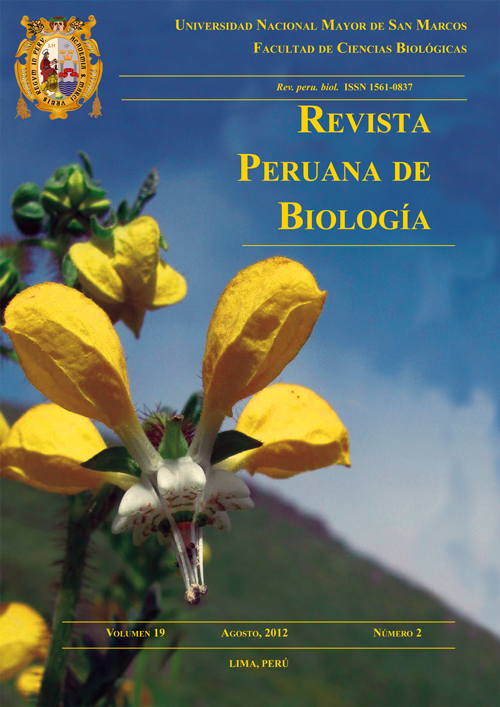Flora vascular de las lomas de Villa María y Amancaes, Lima, Perú
DOI:
https://doi.org/10.15381/rpb.v19i2.834Palabras clave:
Lomas, Villa María, Amancaes, Conservación, EndemismosResumen
En el presente trabajo se informa sobre el inventario de la flora vascular de las lomas de Villa María y Amancaes, Lima. Las expediciones para inventariar ambas localidades se realizaron en setiembre y octubre del 2011. En ambos lugares fueron registradas 121 especies, agrupadas en 41 familias y 99 géneros. Las familias más diversas fueron Asteraceae y Boraginaceae con 17 y 8 especies respectivamente. En las lomas de Villa María se registraron 112 especies agrupadas en 99 géneros y 39 familias, de las cuales 20 fueron endémicas; siendo una de las lomas más diversas de Lima después de Lachay y Carabayllo. En las lomas de Amancaes se registraron 51 especies agrupadas en 43 géneros y 28 familias, de las cuales 9 fueron endémicas. El bajo número de especies en Amancaes se debe a la reducción del área que ocupa producto del crecimiento urbano. En ambas localidades, la vegetación es predominantemente herbácea, con el 77% de las especies en Villa María y 86% en Amancaes. Ambas lomas están sometidas un gran impacto por la expansión urbana, lo que ha reducido el tamaño de sus áreas y ha contribuido a su contaminación, principalmente con los residuos sólidos.Descargas
Descargas
Publicado
Número
Sección
Licencia
Derechos de autor 2012 Huber Trinidad, Elluz Huamán-Melo, Amalia Delgado, Asunción Cano

Esta obra está bajo una licencia internacional Creative Commons Atribución-NoComercial-CompartirIgual 4.0.
LOS AUTORES RETIENEN SUS DERECHOS:
a. Los autores retienen sus derechos de marca y patente, y también sobre cualquier proceso o procedimiento descrito en el artículo.
b. Los autores retienen el derecho de compartir, copiar, distribuir, ejecutar y comunicar públicamente el artículo publicado en la Revista Peruana de Biología (por ejemplo, colocarlo en un repositorio institucional o publicarlo en un libro), con un reconocimiento de su publicación inicial en la Revista Peruana de Biología.
c. Los autores retienen el derecho a hacer una posterior publicación de su trabajo, de utilizar el artículo o cualquier parte de aquel (por ejemplo: una compilación de sus trabajos, notas para conferencias, tesis, o para un libro), siempre que indiquen su publicación inicial en la Revista Peruana de Biología (autores del trabajo, revista, volumen, número y fecha).






